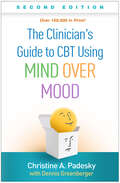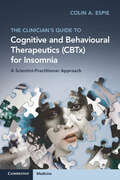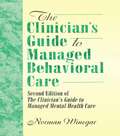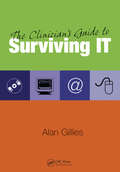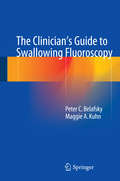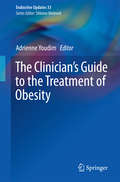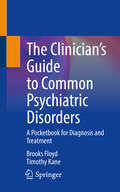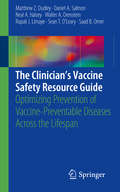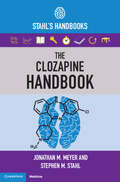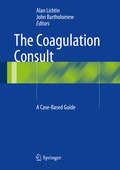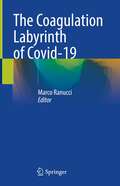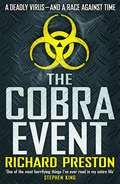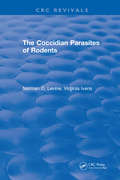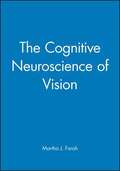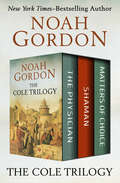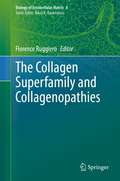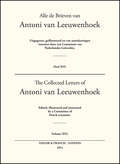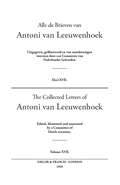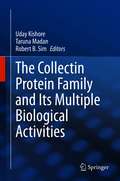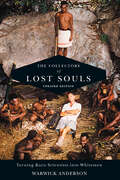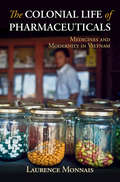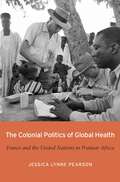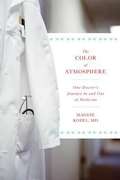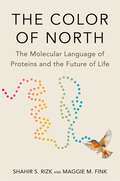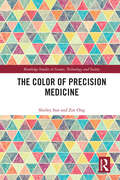- Table View
- List View
The Clinician's Guide to CBT Using Mind Over Mood, Second Edition
by Christine A. PadeskyThis authoritative guide has been completely revised and expanded with over 90% new material in a new step-by-step format. It details how, when, and why therapists can make best use of each chapter in Mind Over Mood, Second Edition (MOM2), in individual, couple, and group therapy. Christine A. Padesky's extensive experience as a CBT innovator, clinician, teacher, and consultant is reflected in compelling therapist–client dialogues that vividly illustrate core CBT interventions and management of challenging dilemmas. Fully updated, the book offers research-based guidance on the use of MOM2 to treat anxiety disorders, depression, anger, guilt, shame, relationship problems, and personality disorders. Invaluable therapy tips, real-life scenarios, and troubleshooting guides in each chapter make this the essential MOM2 companion for novice and experienced therapists alike. Reproducible Reading Guides show how to sequence MOM2 chapters to target specific moods. First edition title: Clinician&’s Guide to Mind Over Mood. New to This Edition *Detailed instructions on how, when, and why to use each of MOM2&’s 60 worksheets. *Expanded coverage of effective use of thought records, behavioral experiments, and imagery. *Shows how to flexibly tailor MOM2 to address particular anxiety disorders, using distinct principles and protocols. *Incorporates evidence-based practices from positive psychology, motivational interviewing, and acceptance and commitment therapy. *Updated practice guidelines throughout, based on current clinical research. *More content on using MOM2 for therapist self-study and in training programs and classrooms. See also Mind Over Mood, Second Edition: Change How You Feel by Changing the Way You Think.
The Clinician's Guide to Cognitive and Behavioural Therapeutics (CBTx) for Insomnia: A Scientist-Practitioner Approach
by Colin A. EspieBased on Dr Colin Espie's 45 years of clinical and research experience, this expert manual for clinicians and healthcare professionals shows how best to assess insomnia and deliver effective treatment in everyday practice using cognitive and behavioural therapeutics (CBTx). The book provides in-depth background on the importance of sleep, the interactions between sleep and health, what insomnia is, and insomnia's negative impact on patients. Using detailed examples, metaphors, and practical guidance, it provides clear instructions on the evaluation of sleep complaints and on the why and how of selecting and providing a specific CBTx to suit the presenting patient. Delving beyond treating patients at the individual level, the book also considers how to develop an effective and efficient insomnia service at population scale.
The Clinician's Guide to Managed Behavioral Care: Second Edition of The Clinician's Guide to Managed Mental Health Care
by William Winston Norman WinegarManaged care is a revolution impacting the practice of clinicians throughout America. The Clinician’s Guide to Managed Behavioral Care, called “a survival kit” and “must reading,” helps clinicians develop and market professional services attuned to the needs of managed care systems, manage the utilization process, and reshape an office practice or hospital-based program to become more “managed care friendly.” It is newly referenced and updated for clinicians to continue to advocate for their patients and clients.The Clinician’s Guide to Managed Behavioral Care addresses how clinicians can develop and market professional services attuned to the needs of managed care systems, how to best manage the utilization review process, how to re-shape an office practice or hospital-based program to become more “managed care friendly,” and how to best advocate for patients and clients. Readers will understand the history and evolution of attempts to manage mental health care costs and services as well as the emerging clinical, economic, and social trends that will continue to fuel changes in the mental health field in coming years. Importantly, this guide sensitizes readers to the perspectives about mental health care benefits and the treatment field held by the payor community--insurance carriers, HMO’s, and self-insured employers. It allows readers to consider a payor’s view of how professionals can play a crucial role in providing quality services while helping control spiraling mental health care costs--costs that have escalated much faster than other segments of health care.Who can benefit from this book? Practicing psychologists, social workers, psychiatrists, substance abuse counselors, marriage and family therapists, Employee Assistance Professionals, psychiatric nurses, professional counselors, program managers, hospital administrators, and health care marketing professionals will find The Clinician’s Guide to Managed Behavioral Care and invaluable resource.It is often said that in the future, all in the treatment community will be involved in “managing care” and that the most successful clinicians and practices will be those most adept at working with managed care systems on behalf of their patients and clients. This book helps you understand how!Important topics in The Clinician’s Guide to Managed Behavioral Care: the changing marketplace for mental health/substance abuse treatment services assessing market opportunities in light of managed care influences clinical service needs of managed care systems clinical innovations: examples, case studies, vignettes strategies for managing utilization review marketing strategies for office-based practitioners hospital-managed care partnerships contemporary office management strategies to control costs consumers and managed care directory of America’s HMOs directory of America’s Managed Mental Health Care Companies glossary of key terms
The Clinician's Guide to Surviving IT
by Alan GilliesThe NHS is currently in the middle of the biggest information technology project in Western Europe, which will fundamentally change the working practices of all NHS staff over the next five years. This book explains to ordinary clinicians why they should be bothered with IT, and what their responsibilities are in making it work. This book provides an enlightening and reassuring read that dispels ignorance and suspicion. The user friendly style is helpful, and friendly panels with tips, warnings, reflective pauses and key points highlight important details. It is also suitable for use as a student textbook. The Clinician's Guide to Surviving I.T. is a must for every doctor, nurse and midwife in the NHS.
The Clinician's Guide to Swallowing Fluoroscopy
by Peter C. Belafsky Maggie A. KuhnThe Clinician's Guide to Swallowing Fluoroscopy is a comprehensive resource for all dysphagia clinicians. This beautifully-illustrated text is intended for SLP, ENT, radiology, GI, and rehabilitation specialists interested in swallowing and addresses the need for an up-to-date, all-inclusive reference. Topics covered include radiation safety and protection, fluoroscopic oral, pharygeal, and esophageal phase protocols and abnormalities, and objective measures of timing and displacement.
The Clinician's Guide to the Treatment of Obesity
by Adrienne YoudimPresenting detailed information on treatment of the obese patient, this handy, concise title is designed not only to educate practitioners about obesity but, most importantly, to provide practical strategies in the comprehensive approach to treating this disease. Replete with bulleted lists and tables for easy referencing, this unique reference provides a comprehensive overview of the pathophysiology and natural history of obesity as well as a thorough review of available treatment options. The book's early chapters discuss the disease of obesity, its corresponding health burden on individuals and society, and the psychosocial morbidity and effect of weight loss. Later practical, treatment-centered chapters include dietary and lifestyle strategies for weight loss, physical activity and writing an exercise prescription, pharmacotherapy approaches, perioperative care of the surgical patient, and complications of weight loss surgery, to name just several. An indispensable, easy-to-read resource for all health professionals interested in obesity diagnosis and treatment, The Clinician's Guide to the Treatment of Obesity is a significant contribution to the literature that will be of value to all physicians, with particular appeal internal medicine and primary care physicians, endocrinologists, cardiologists, physician assistants, nurse practitioners and any practitioner that wishes to learn the up to date treatment strategies for the obese patient.
The Clinician’s Guide to Common Psychiatric Disorders: A Pocketbook for Diagnosis and Treatment
by Brooks Floyd Timothy KaneThis book is an easy-to-read resource that covers the most common psychiatric illnesses and preferred pharmacological treatments for said illnesses. This guidebook will assist providers new to the field of psychiatry to better understand how to treat common psychiatric disorders. What follows is the accumulation of 30 years of experience paired with an eagerness to help those overwhelmed by the field of psychiatry, just as the authors once were. The book is broken down into chapters that each cover a different illness. Each chapter briefly describes the diagnostic criteria of the illness, usually using a mnemonic to help memorize the criteria, and includes other information that may prove useful to the novice clinician. Chapters cover risk factors for the illness and common screening scales used for each diagnosis. This leads into the first-line preferred treatment. Some chapters, such as Depression, will have an easy-to-follow algorithm that covers what to do if treatment fails. Second-line treatments and off-label usage are clearly outlined throughout the book. Each medication will have the recommended starting dose of the drug according to the package insert of the medication as well as common titration methods. Maximum recommended dosages are also outlined. Drug profiles will describe the most common side effects as well as FDA indications. Each category will continue with recommended monitoring for the drug and pearls from the authors. The Clinician's Guide to Common Psychiatric Disorders is a book intended for any provider that may prescribe psychiatric medications, whether it be a primary care physician, a physician’s assistant, or a nurse practitioner working in family medicine, or a resident just starting out in psychiatry.
The Clinician’s Vaccine Safety Resource Guide: Optimizing Prevention of Vaccine-Preventable Diseases Across the Lifespan
by Walter A. Orenstein Matthew Z. Dudley Daniel A. Salmon Neal A. Halsey Rupali J. Limaye Sean T. O'Leary Saad B. OmerThis book provides clinicians and their staff with essential information on the vaccines that are recommended and not recommended for their patients, the diseases these vaccines prevent, and a broad range of potential vaccine safety issues that may be brought up by their patients. Each topic, from specific vaccines to safety concerns, is covered succinctly, based upon systematic reviews of the scientific literature, with talking points to be used with patients. The organization of the information makes it easy to reference specific topics and quickly find pertinent information, with the most practical details (such as recommendations and causality conclusions) highlighted at the very beginning of the respective sections. There are also sections outlining the vaccine safety system and evidence-based strategies for how to talk with patients about vaccines. This book aims to improve the efficiency and effectiveness of clinical vaccine discussions with patients, leading to more informed patients and timely vaccination. This is an ideal resource for all clinicians administering vaccines and their healthcare teams.
The Clozapine Handbook: Stahl's Handbooks (Stahl's Essential Psychopharmacology Handbooks)
by Stephen M. Stahl Jonathan M. MeyerReal-world and clinical trial data support that clozapine is the only effective antipsychotic for treatment resistant schizophrenia and other severe mental illnesses. Clozapine also reduces rates of suicidality, psychiatric hospitalization and all-cause mortality. However, clozapine is underutilized for 2 reasons: misunderstandings of its efficacy benefits and misapprehension of, limited knowledge or misinformation about the management of treatment related risks and adverse effects. In response to worldwide efforts to promote clozapine use, this user-friendly handbook provides clinicians with evidence-based approaches for patient management as well as logical approaches to the management of clinical situations and adverse effects. It outlines clearly the rationale for specific management decisions and prioritises the options based on this logic. This handbook is designed for use by clinicians worldwide and is essential reading for all mental health care professionals.
The Coagulation Consult
by Alan Lichtin John BartholomewThere have been many changes in the field of coagulation during the past decade. New concepts of epidemiology of risk factors for thrombosis now help clinicians predict who is more likely to form clots after surgery, or after being placed on oral contraceptives. New anticoagulants have the potential to redefine how patients with atrial fibrillation and venous thrombosis are managed. There are new forms of recombinant clotting factors which have changed our approach to hypofibrinogenemia and von Willebrand's disease. Newer antiplatelet agents are available and their use in patients receiving cardiac stents has mushroomed. The management of thrombosis in the setting of pregnancy has changed over the past decade, as well as the way clinicians approach women with multiple miscarriages. An entire new class of compounds, the thrombopoietins, are available to treat individuals with immune thrombocytopenic purpura (ITP). The Coagulation Consult covers major topics of interest to hematologists who are asked to consult on individuals with coagulation related diseases, and encompasses the field's most recent developments. This "case-directed" book describes state-of-the-art approaches to patients with bleeding and clotting disorders, as well as laboratory tests for coagulation. Chapters include different vignettes, focus on typical clinical consult questions, and lay out specific types of treatment. Practicing clinicians being confronted with coagulation consult students, residents, fellows and attending physicians will find this unique text an invaluable resource for some of the newer areas of coagulation science, therapy and pharmacology.
The Coagulation Labyrinth of Covid-19
by Marco RanucciThis book is devoted to COVID-19 associated coagulopathy, one of the main determinants of mortality. The volume, intended as a guide, will lead the reader in a pathway starting from pathophysiology and passing through laboratory data, clinical aspects, imaging, and therapeutic options. Written in the middle of the second wave, the book is the first addressing the topic and summarizing the results of studies and articles meanwhile published, thus representing a unique tool for clinicians fighting the disease. The Coagulation Labyrinth of Covid-19 is intended for clinicians working with acute and sub-acute ARDS cases: intensivists, anesthesiologists, cardiologists, hematologists, who will find in it an essential guide to manage the COVID-19 pandemic.
The Cobra Event: A Novel
by Richard PrestonA deadly virus - and a desperate race against time.'One of the most horrifying things I've ever read in my entire life' Stephen KingOne spring morning in New York City a seventeen-year-old student wakes up feeling vaguely ill. Hours later she is having violent seizures, blood is pouring out of her nose, and she begins to attack her own body in the most hideous way imaginable. Soon, other gruesome deaths of a similar nature have been discovered, and the autopsies reveal that a previously unknown virus is at large. It replicates horribly fast, it is always fatal - and is just too efficient to be entirely natural.When the Centre for Disease Control sends a forensic pathologist to investigate, her discoveries precipitate a national crisis.THE COBRA EVENT is a dramatic, heart-stopping thriller of an all-too-real threat.
The Coccidian Parasites of Rodents
by Norman D. LevineThis important, long-needed revision of the authors' previous book discusses the 473 named species of coccidia of rodents. It. contains over twice as many as the 1965 book, The Coccidian Parasites (Protozoa, Sporozoa) of Rodents. Included is the available up-to-date information about each of these species. Data are given for the 99 forms which have insufficient information available to justify assigning them species names. This work can be used as a guide to future investigations, not only on rodent coccidia, but also on the coccidia of all other vertebrates and even some invertebrates. This book will serve as an invaluable and authoritative source for parasitologists. It is of importance to those involved in protozoology, tropical medicine, wildlife diseases and veterinary medicine.
The Cognitive Neuroscience of Vision (Fundamentals of Cognitive Neuroscience)
by Martha J. FarahThe Cognitive Neuroscience of Vision begins by introducing the reader to the anatomy of the eye and visual cortex and then proceeds to discuss image and representation, face recognition, printed word recognition, visual sematic memory and visual attention and perception.
The Cole Trilogy: The Physician, Shaman, and Matters of Choice (The Cole Trilogy #1)
by Noah GordonThe New York Times–bestselling author&’s historical saga of a family of healers—from Dark Ages London to Civil War America to modern-day Boston. In The Physician, an orphan in eleventh-century London, Robert Cole, becomes a fast-talking swindler. As he matures, his strange gift—an acute sensitivity to impending death—never leaves him, and he yearns to become a healer. Arab madrassas are the only authentic medical schools, and he makes his perilous way to Persia. Christians are barred from Muslim schools, but by claiming he is a Jew, he studies under the world&’s most renowned physician, Avicenna. Cole&’s journey and love for a woman who must struggle against her only rival—medicine—make The Physician a riveting modern classic. In Shaman, Dr. Robert Judson Cole, nineteenth-century descendent of the first Robert Cole, travels from his ravaged Scottish homeland, through the operating rooms of antebellum Boston, to the cabins of frontier Illinois. In the wilderness he befriends the starving remnants of the Sauk tribe, who have fled their reservation. In the process, he absorbs their culture and learns native remedies that enrich his classical medical education. He marries a remarkable settler woman he had saved from illness. The Cole family is drawn into the bloody vortex of the Civil War, and their determination to survive in the midst of wilderness and violence will stay with the reader long after the final page. In Matters of Choice, Roberta Jeanne d&’Arc Cole is the latest first-born descendant of Dr. Robert Cole. Favored to be named associate chief of medicine at a Boston hospital, she is married to a surgeon and owns a trophy residence in Cambridge as well as a summer house. But everything melts away. Her gender and her work at an abortion clinic cost her the hospital appointment. Her marriage fails. Crushed, she goes to her farmhouse in western Massachusetts, thinking to sell it, and finds an unexpected life. How she continues to fight for every woman&’s right to choose, while acknowledging her own ticking clock and maternal yearning, makes this prize-winning third story of the Cole trilogy relevant and unforgettable.
The Collagen Superfamily and Collagenopathies (Biology of Extracellular Matrix #8)
by Florence RuggieroThis book aims at providing insights into the collagen superfamily and the remarkable diversity of collagen function within the extracellular matrix. Additionally, the mechanisms underlying collagen-related diseases such as dystrophic epidermolysis bullosa, osteogenesis imperfecta, as well as collagen-related myopathies and neurological disorders are discussed.Collagens are the most abundant extracellular matrix proteins in organisms. Their primary function is to provide structural support and strength to cells and to maintain biomechanical integrity of tissues. However, collagens can no longer be considered just as structural proteins. They can act as extracellular modulators of signaling events and serve critical regulatory roles in various cell functions during embryonic development and adult homeostasis. Furthermore, collagens are associated with a broad spectrum of heritability-related diseases known as “collagenopathies” that affect a multitude of organs and tissues including sensorial organs.The book is a useful introduction to the field for junior scientists, interested in extracellular matrix research. It is also an interesting read for advanced scientists and clinicians working on collagens and collagenopathies, giving them a broader view of the field beyond their area of specialization.
The Collected Letters of Antoni Van Leeuwenhoek - Volume 16
by Drs. L. C.In volume XVI of The Collected Letters of Antoni van Leeuwenhoek, 25 letters of Van Leeuwenhoek have been included, all of them written from July 1707 to June 1712. The letters were written to six distinct addressees. The larger part was addressed to the Royal Society in London in general (sixteen letters); and to three of its fellows in particular
The Collected Letters of Antoni Van Leeuwenhoek - Volume 17
by Douglas Anderson Lodewijk C Palm Huib J. Zuidervaart Elisabeth W. EntjesThe contents of the letters published here, again show the great range of subjects that occupied Van Leeuwenhoek: from sugar candy, the shape and crystal structure of diamonds, the dissolution of silver crystals in aqua fortis to gold dust from Guinea dissolved in aqua regia and the dissolution and separation of gold, silver, and copper. Every volume in the Series contains the texts in the original Dutch and an English translation. The great range of subjects studied by Van Leeuwenhoek is reflected in these letters: instruments to measure water, pulmonary diseases; experiments relating to the solution of gold and silver; salt crystals and grains of sand; botanical work, such as duckweed and germination of orange pips; description on protozoa. blood, spermatozoa and health and hygiene, for example and harmfulness of tea and coffee and the benefits of cleaning teeth.
The Collectin Protein Family and Its Multiple Biological Activities
by Robert B. Sim Uday Kishore Taruna MadanThe topic of this book, Collectins, is a family of proteins whose major function is in innate immunity, where Collectins act as pattern recognition receptors (PRRs). In general they recognize targets such as microbial surfaces and apoptotic cells, and once bound to a target, Collectins promote the clearance of microorganisms and damaged host tissue. New cell-surface proteins and glycoproteins, which act as Collectin receptors, are currently being identified. Some Collectins, particularly MBL, activate the complement system, which enhances the ability of antibodies to fight pathogens, via three MBL-associated proteases, the MASPs. Additionally, recent research has begun to show wider-ranging activities of Collectins, such as: · Their role in metabolism, and therefore their involvement in lifestyle diseases such as obesity and cardiovascular disease.· Their ability to modulate the adaptive immune response, as well as to recognize and trigger apoptosis of cancer cells, which makes them effective in the annihilation of cancer cells with multiple mutations.· The regulation of their expression by gonadal steroid hormones implicates them with critical roles in both male and female fertility.· Altered levels of Collectins have been associated with various autoimmune diseases.This book brings together current knowledge of the structure, functions and biological activities of Collectins, to describe their integral role in human health.
The Collectors of Lost Souls: Turning Kuru Scientists into Whitemen
by Warwick AndersonThis riveting account of medical detective work traces the story of kuru, a fatal brain disease, and the pioneering scientists who spent decades searching for its cause and cure.Winner, William H. Welch Medal, American Association for the History of MedicineWinner, Ludwik Fleck Prize, Society for Social Studies of ScienceWinner, General History Award, New South Wales Premier's History AwardsWhen whites first encountered the Fore people in the isolated highlands of colonial New Guinea during the 1940s and 1950s, they found a people in the grip of a bizarre epidemic. Women and children succumbed to muscle weakness, uncontrollable tremors, and lack of coordination, until death inevitably supervened. Facing extinction, the Fore attributed their unique and terrifying affliction to a particularly malign form of sorcery.In The Collectors of Lost Souls, Warwick Anderson tells the story of the resilience of the Fore through this devastating plague, their transformation into modern people, and their compelling attraction for a throng of eccentric and adventurous scientists and anthropologists. Battling competing scientists and the colonial authorities, the brilliant and troubled American doctor D. Carleton Gajdusek determined that the cause of the epidemic—kuru—was a new and mysterious agent of infection, which he called a slow virus (now called a prion). Anthropologists and epidemiologists soon realized that the Fore practice of eating their loved ones after death had spread the slow virus. Though the Fore were never convinced, Gajdusek received the Nobel Prize for his discovery. Now revised and updated, the book includes an extensive new afterword that situates its impact within the fields of science and technology studies and the history of science. Additionally, the author now reflects on his long engagement with the scientists and the people afflicted, describing what has happened to them since the end of kuru. This astonishing story links first-contact encounters in New Guinea with laboratory experiments in Bethesda, Maryland; sorcery with science; cannibalism with compassion; and slow viruses with infectious proteins, reshaping our understanding of what it means to do science.
The Colonial Life of Pharmaceuticals: Medicines and Modernity in Vietnam (Global Health Histories)
by Laurence MonnaisSituated at the crossroads between the history of colonialism, of modern Southeast Asia, and of medical pluralism, this history of medicine and health traces the life of pharmaceuticals in Vietnam under French rule. Laurence Monnais examines the globalization of the pharmaceutical industry, looking at both circulation and consumption, considering access to drugs and the existence of multiple therapeutic options in a colonial context. She argues that colonialism was crucial to the worldwide diffusion of modern medicines and speaks to contemporary concerns regarding over-reliance on pharmaceuticals, drug toxicity, self-medication, and the accessibility of effective medicines. Retracing the steps by which pharmaceuticals were produced and distributed, readers meet the many players in the process, from colonial doctors to private pharmacists, from consumers to various drug traders and healers. Yet this is not primarily a history of medicines as objects of colonial science, but rather a history of medicines as tools of social change.
The Colonial Politics of Global Health: France and the United Nations in Postwar Africa
by Jessica Lynne PearsonJessica Lynne Pearson explores the collision between imperial and international visions of health and development in French Africa as postwar decolonization movements gained strength. The consequences of putting politics above public health continue to play out in constraints placed on international health organizations half a century later.
The Color of Atmosphere
by Maggie KozelKozel, a graduate of Georgetown University School of Medicine in 1980, spent the first 10 years of her medical career as a physician in the US military, with its universal, single-payer health coverage offering every family the same access to the latest health care. In this memoir for general readers, she recounts with warmth and humor her journey from idealistic young pediatrician to the culture shock of private practice outside the military. Her personal story is told in the context of the changing healthcare system, focusing on how the current method of paying for health care has changed the way doctors practice, not for the better. Kozel, now a high school teacher, argues that the profession is currently shaped by health insurance reimbursements and pharmaceutical marketing rather than by science. The book will be of interest to those working in the medical profession, those considering it, and general readers. Annotation ©2011 Book News, Inc. , Portland, OR (booknews. com)
The Color of North: The Molecular Language of Proteins and the Future of Life
by Shahir S. Rizk Maggie M. FinkAn awe-inspiring journey into the world of proteins—how they shape life, and their remarkable potential to heal our bodies and our planet.Each fall, a robin begins the long trek north from Gibraltar to her summer home in Central Europe. Nestled deep in her optic nerve, a tiny protein turns a lone electron into a compass, allowing her to see north in colors we can only dream of perceiving.Taking us beyond the confines of our own experiences, The Color of North traverses the kingdom of life to uncover the myriad ways that proteins shape us and all organisms on the planet. Inside every cell, a tight-knit community of millions of proteins skillfully contorts into unique shapes to give fireflies their ghostly glow, enable the octopus to see predators with its skin, and make humans fall in love. Collectively, proteins orchestrate the intricate relationships within ecosystems and forge the trajectory of life. And yet, nature has exploited just a fraction of their immense potential. Shahir S. Rizk and Maggie M. Fink show how breathtaking advances in protein engineering are expanding on nature’s repertoire, introducing proteins that can detect environmental pollutants, capture carbon dioxide from the atmosphere, and treat diseases from cancer to COVID-19.Weaving together themes of memory, migration, and family with cutting-edge research, The Color of North unveils a molecular world in which proteins are the pulsing heart of life. Ultimately, we gain a new appreciation for our intimate connections to the world around us and a deeper understanding of ourselves.
The Color of Precision Medicine (Routledge Studies in Science, Technology and Society)
by Shirley Sun Zoe OngWill genome-based precision medicine fix the problem of race/ethnicity-based medicine? To answer this question, Sun and Ong propose the concept of racialization of precision medicine, defined as the social processes by which racial/ethnic categories are incorporated (or not) into the development, interpretation, and implementation of precision medicine research and practice.Drawing on interview data with physicians and scientists in the field of cancer care, this book addresses the following questions: Who are the racializers in precision medicine, how and why do they do it? Under what conditions do clinicians personalize medical treatments in the context of cancer therapies? The chapters elucidate different ways in which racialization occurs and reveal that there exists an inherent contradiction in the usage of race/ethnicity as precision medicine moves from bench to bedside. The relative resources theory is proposed to explain that whether race/ethnicity-based medicine will be replaced by genomic medicine depends on the resources available at the individual and systemic levels. Furthermore, this book expands on how racialization happens not only in pharmacogenomic drug efficacy studies, but also in drug toxicity studies and cost-effectiveness studies.An important resource for clinicians, researchers, public health policymakers, health economists, and journalists on how to deracialize precision medicine.
